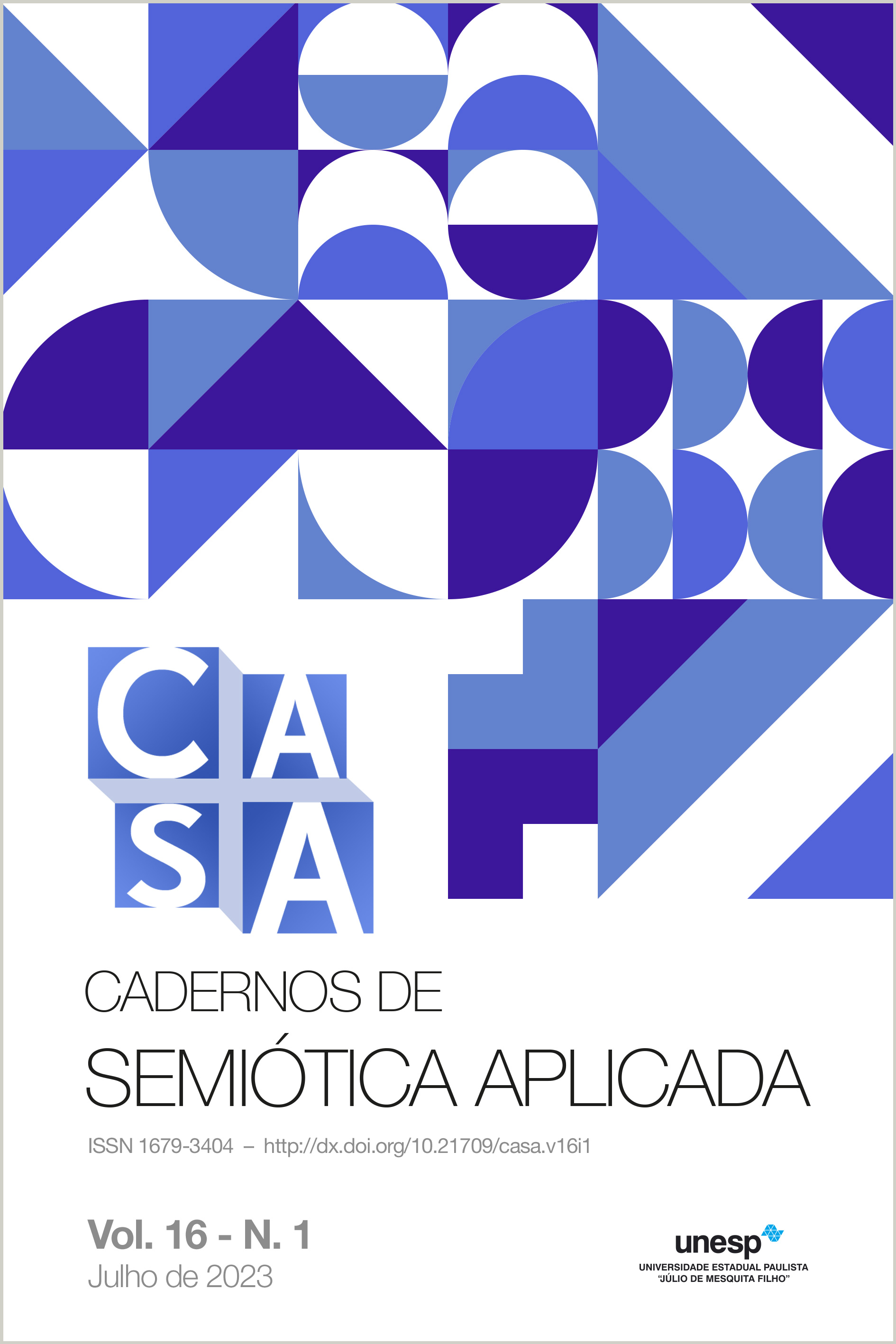POR UM MODELO TAXIONÔMICO DA MODALIZAÇÃO DO FAZER
FOR A TAXONOMIC MODEL OF THE MODALIZATION OF DOING
DOI:
https://doi.org/10.21709/casa.v16i1.17724Keywords:
Semiótica da competência. Taxionomia. Modalização do fazer.Abstract
Semiotics proposed a canonical narrative scheme segmented into three major niches: semiotics of manipulation, semiotics of action and semiotics of sanction. Studies and analyzes in each of these niches have advanced a lot, although Greimas wanted that, parallel to these, a theory that assimilated consonant studies between logicians and semioticians could finally emerge: a theory of competence. Considering that every performance presupposes a competence of the subject of doing, the present work seeks to answer the following question: what are the articulation possibilities of the modal structure of the subject of doing in relation to a performable act? For this, we base ourselves on the proposals of Barros (2005), Bertrand (2003), Fiorin (2000), Greimas and Courtés (2008) and Greimas (2014 [1980]), we revisit the concepts of modality, modalization, doing, performance, competence, and finally, we propose a taxonomic model both for the modalization of doing and for the modal competence of the subject to doing, as well as for the act, understood as execution, that is, performance in its pragmatic dimension. We observed that, having produced an act, there would be at least three possibilities for organizing the modal structure of the subject’s pragmatic competence, which would lead us to three types of acts: coercive, voluntary and involuntary.
Downloads
Published
Issue
Section
License
Copyright (c) 2023 CASA: Cadernos de Semiótica Aplicada

This work is licensed under a Creative Commons Attribution-NonCommercial-NoDerivatives 4.0 International License.
The authors of the approved papers agree to grant non-exclusive publication rights to CASA. Thus, authors are free to make their texts available in other media, provided that they mention that the texts were first published in CASA: Cadernos de Semiótica Aplicada. Besides, they authorize the Journal to reproduce their submission in indexers, repositories, and such. Authors are not allowed to publish the translation of the published paper to another language without the written approval of the Executive Editors. The authors are totally responsible for the content of the published work.

